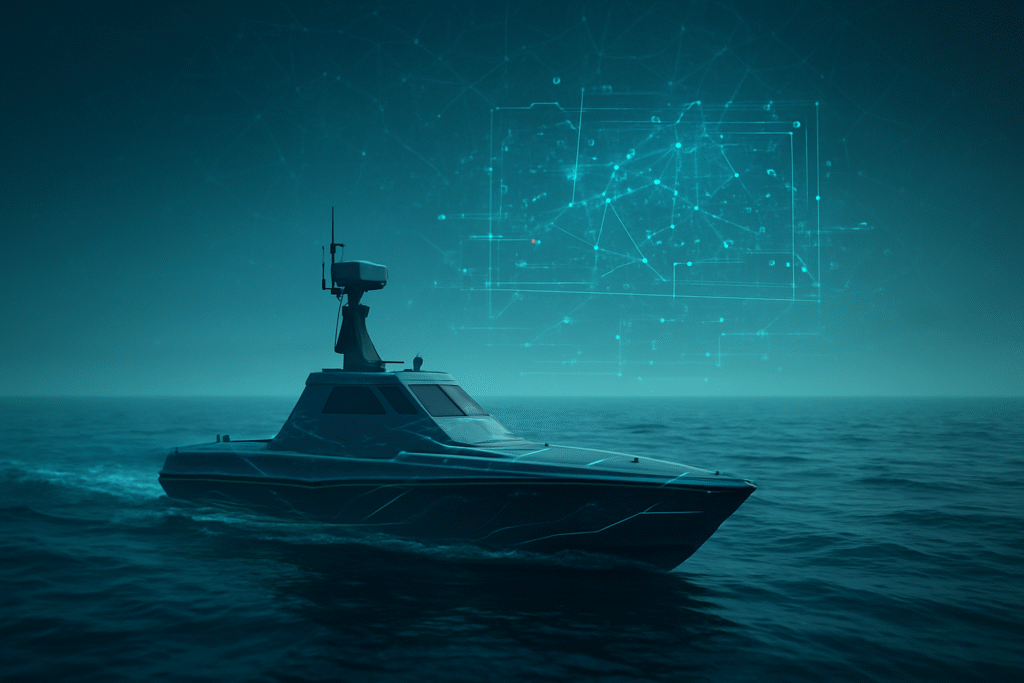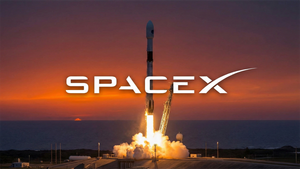Financial News
Prescient Edge: From Startup to ‘Program of the Year’ — How AI Innovation is Reshaping National Security

Washington D.C., October 29, 2025 – Prescient Edge Corporation (PEC), a veteran-owned technology business, has emerged as a beacon of innovation in the defense sector, culminating in its prestigious "Program of the Year" win at the Greater Washington GovCon Awards in December 2024. This significant accolade recognizes Prescient Edge's groundbreaking work as the prime integrator for U.S. Naval Forces Central Command (NAVCENT) Task Force 59, showcasing how agile startups can leverage cutting-edge AI to deliver transformative impact on national security. Their journey underscores a pivotal shift in how the U.S. military is embracing rapid technological integration to maintain a strategic edge in global maritime operations.
The award highlights Prescient Edge's instrumental role in advancing the U.S. Navy's capabilities to rapidly integrate unmanned air, sea, and underwater systems using artificial intelligence into critical maritime operations. This collaboration has not only enhanced maritime surveillance and operational agility but has also positioned Task Force 59 as a global leader in maritime innovation. The recognition validates Prescient Edge's leadership in AI, its contribution to enhanced maritime security, and its influence in spurring wider adoption of AI-driven strategies across other Navy Fleets and task forces.
The AI Engine Behind Maritime Dominance: Technical Deep Dive into Task Force 59
Prescient Edge's AI advancement with NAVCENT Task Force 59 is rooted in the development and operation of an interconnected framework of over 23 autonomous surface, subsurface, and air systems. The core AI functionalities integrated by Prescient Edge are designed to elevate maritime domain awareness and deterrence in critical regions, leveraging AI-enabled sensors, radars, and cameras for comprehensive monitoring and data collection across vast maritime environments.
Key technical capabilities include advanced data analysis and anomaly detection, where integrated AI and machine learning (ML) models process massive datasets to identify suspicious behaviors and patterns that might elude human operators. This encompasses predictive maintenance, image recognition, and sophisticated anomaly detection. A significant innovation is the "single pane of glass" interface, which uses AI to synthesize complex information from multiple unmanned systems onto a unified display for watchstanders in Task Force 59's Robotics Operations Center. This reduces cognitive load and accelerates decision-making. Furthermore, the AI systems are engineered for robust human-machine teaming, fostering trust and enabling more effective and efficient operations alongside manned platforms. Prescient Edge's expertise in "Edge AI and Analytics" allows them to deploy AI and ML models directly at the edge, ensuring real-time data processing and decision-making for IoT devices, even in communications-denied environments.
This approach marks a significant departure from previous defense acquisition and deployment strategies. Task Force 59, with integrators like Prescient Edge, champions the rapid adoption of mature, commercial off-the-shelf (COTS) unmanned systems and AI tools, contrasting sharply with the traditionally lengthy and complex defense acquisition cycles. The emphasis is on aggressive experimentation and quick iteration, allowing for rapid application of operational lessons. Instead of relying on a few large, manned platforms, the strategy involves deploying a vast, integrated network of numerous smaller, AI-enabled unmanned systems, creating a "digital ocean" for persistent monitoring. This not only enhances capabilities but also offers a cost-effective force multiplier, allowing manned ships to be used more efficiently.
Initial reactions from within the defense industry and naval leadership have been overwhelmingly positive. Vice Adm. Brad Cooper, commander of U.S. Naval Forces Central Command, has praised Task Force 59's achievements, noting that AI "unleashes our ability to assess terabytes of data rapidly, compare it against existing data, analyze patterns, and identify abnormalities, enabling us to accelerate our decision-making processes with increased accuracy." Alexander Granados, CEO of Prescient Edge, has underscored the transformative potential of unmanned systems and AI as the future of national defense and warfare. While specific algorithmic details remain proprietary due to the nature of defense contracts, the widespread industry recognition, including the GovCon award, signifies strong confidence in Prescient Edge's integrated AI solutions.
Reshaping the AI Competitive Landscape: Implications for Tech Giants and Startups
Prescient Edge's success with NAVCENT Task Force 59 sends clear signals across the AI industry, impacting tech giants, traditional defense contractors, and emerging startups alike. Their "Program of the Year" win validates the efficacy of agile, specialized AI startups in delivering cutting-edge solutions to defense agencies, broadening opportunities for other defense-focused AI startups in autonomous systems, data analytics, and real-time intelligence. These companies stand to benefit from increased access to government funding, research grants (like SBIR Phase III contracts), and invaluable opportunities to scale their technologies in real-world military scenarios.
For tech giants, the rise of specialized defense AI firms like Prescient Edge, alongside companies such as Palantir Technologies (NYSE: PLTR) and Anduril Industries, serves as a significant challenge to traditional dominance. This compels larger tech companies to either intensify their defense AI initiatives or pursue strategic partnerships. Companies like Alphabet (NASDAQ: GOOGL), which previously expressed reservations about military AI, have since reversed course, engaging in formal partnerships with defense contractors like Lockheed Martin (NYSE: LMT). Similarly, OpenAI has secured Pentagon contracts, and International Business Machines (NYSE: IBM) is developing large language models for defense applications. Tech giants are increasingly focusing on providing foundational AI capabilities—cloud infrastructure, advanced chips, and sophisticated LLMs—that can be customized by specialized integrators.
Traditional defense contractors such as Lockheed Martin (NYSE: LMT), Raytheon Technologies (NYSE: RTX), and Northrop Grumman (NYSE: NOC) face growing competition from these agile AI-focused startups. To maintain their competitive edge, they must significantly increase AI research and development, acquire promising AI startups, or forge strategic alliances. The success of Prescient Edge also highlights a potential disruption to existing products and services. There's a strategic shift from expensive, slow-to-develop traditional military hardware towards more agile, software-defined, AI-driven platforms. AI-enabled sensors and unmanned systems offer more comprehensive and persistent monitoring, potentially rendering older, less efficient surveillance methods obsolete.
The market positioning and strategic advantages underscored by Prescient Edge's achievement include the paramount importance of agility and rapid prototyping in defense AI. Their role as a "prime integrator" coordinating diverse autonomous systems highlights the critical need for companies capable of seamlessly integrating various AI and unmanned technologies. Building human-machine trust, leveraging Commercial-Off-The-Shelf (COTS) technology for faster deployment and cost-effectiveness, and developing robust interoperability and networked intelligence capabilities are also emerging as crucial strategic advantages. Companies that can effectively address the ethical and governance concerns associated with AI integration will also gain a significant edge.
A New Era of AI in Defense: Wider Significance and Emerging Concerns
Prescient Edge's "Program of the Year" win is not merely an isolated success; it signifies a maturing of AI in the defense sector and aligns with several broader AI landscape trends. The focus on Edge AI and real-time processing, crucial for defense applications where connectivity may be limited, underscores a global shift towards decentralized AI. The increasing reliance on autonomous drones and maritime systems as core components of modern defense strategies reflects a move towards enhancing military reach while reducing human exposure to high-risk scenarios. AI's role in data-driven decision-making, rapidly analyzing vast sensor data to improve situational awareness and accelerate response times, is redefining military intelligence.
This achievement is also a testament to the "rapid innovation" or "factory to fleet" model championed by Task Force 59, which prioritizes quickly testing and integrating commercial AI and unmanned technology in real-world environments. This agile approach, allowing for software fixes within hours and hardware updates within days, marks a significant paradigm shift from traditional lengthy defense development cycles. It's a key step towards developing "Hybrid Fleets" where manned and unmanned assets work synergistically, optimizing resource allocation and expanding operational capabilities.
The wider societal impacts of such AI integration are profound. Primarily, it enhances national security by improving surveillance, threat detection, and response, potentially leading to more stable maritime regions and better deterrence against illicit activities. By deploying unmanned systems for dangerous missions, AI can significantly reduce risks to human life. The success also fosters international collaboration, encouraging multinational exercises and strengthening alliances in adopting advanced AI systems. Moreover, the rapid development of defense AI can spill over into the commercial sector, driving innovation in autonomous navigation, advanced sensors, and real-time data analytics.
However, the widespread adoption of AI in defense also raises significant concerns. Ethical considerations surrounding autonomous weapons systems (AWS) and the delegation of life-and-death decisions to algorithms are intensely debated. Questions of accountability for potential errors and compliance with international humanitarian law remain unresolved. The potential for AI models to inherit societal biases from training data could lead to biased outcomes or unintended conflict escalation. Job displacement, particularly in routine military tasks, is another concern, requiring significant retraining and upskilling for service members. Furthermore, AI's ability to compress decision-making timelines could reduce the space for diplomacy, increasing the risk of unintended conflict, while AI-powered surveillance tools raise civil liberty concerns.
Compared to previous AI milestones, Prescient Edge's work represents an operational breakthrough in military application. While early AI milestones focused on symbolic reasoning and game-playing (e.g., Deep Blue), and later milestones demonstrated advancements in natural language processing and complex strategic reasoning (e.g., AlphaGo), Prescient Edge's innovation applies these capabilities in a highly distributed, real-time, and mission-critical context. Building on initiatives like Project Maven, which used computer vision for drone imagery analysis, Prescient Edge integrates AI across multiple autonomous systems (air, sea, underwater) within an interconnected framework, moving beyond mere image analysis to broader operational agility and decision support. It signifies a critical juncture where AI is not just augmenting human capabilities but fundamentally reshaping the nature of warfare and defense operations.
The Horizon of Autonomy: Future Developments in Defense AI
The trajectory set by Prescient Edge's AI innovation and the success of NAVCENT Task Force 59 points towards a future where AI and autonomous systems are increasingly central to defense strategies. In the near term (1-5 years), we can expect significant advancements in autonomous edge capabilities, allowing platforms to make complex, context-aware decisions in challenging environments without constant network connectivity. This will involve reducing the size of AI models and enabling them to natively understand raw sensor data for proactive decision-making. AI will also accelerate mission planning and decision support, delivering real-time, defense-specific intelligence and predictive analytics for threat forecasting. Increased collaboration between defense agencies, private tech firms, and international partners, along with the development of AI-driven cybersecurity solutions, will be paramount. AI will also optimize military logistics through predictive maintenance and smart inventory systems.
Looking further ahead (beyond 5 years), the long-term future points towards increasingly autonomous defense systems that can identify and neutralize threats with minimal human oversight, fundamentally redefining the role of security professionals. AI is expected to transform the character of warfare across all domains—logistics, battlefield, undersea, cyberspace, and outer space—enabling capabilities like drone swarms and AI-powered logistics. Experts predict the rise of multi-agent AI systems where groups of autonomous AI agents collaborate on complex defensive tasks. Strategic dominance will increasingly depend on real-time data processing, rapid adaptation, and autonomous execution, with nations mastering AI integration setting future rules of engagement.
Potential applications and use cases are vast, spanning Intelligence, Surveillance, Target Acquisition, and Reconnaissance (ISTAR) where AI rapidly interprets satellite photos, decodes communications, and fuses data for comprehensive threat assessments. Autonomous systems, from unmanned submarines to combat drones, will perform dangerous missions. AI will bolster cybersecurity by predicting and responding to threats faster than traditional methods. Predictive analytics will forecast threats and optimize resource allocation, while AI will enhance Command and Control (C2) by synthesizing vast datasets for faster decision-making. Training and simulation will become more realistic with AI-powered virtual environments, and AI will improve electronic warfare and border security.
However, several challenges must be addressed for these developments to be realized responsibly. Ethical considerations surrounding autonomous weapons systems, accountability for AI decisions, and the potential for bias in AI systems remain critical hurdles. Data challenges, including the need for large, applicable, and unbiased military datasets, along with data security and privacy, are paramount. Building trust and ensuring explainability in AI's decision-making processes are crucial for military operators. Preventing "enfeeblement"—a decrease in human skills due to overreliance on AI—and managing institutional resistance to change within the DoD are also significant. Furthermore, the vulnerability of military AI systems to attack, tampering, or adversarial manipulation, as well as the potential for AI to accelerate conflict escalation, demand careful attention.
Experts predict a transformative future, emphasizing that AI will fundamentally change warfare within the next two decades. There's a clear shift towards lower-cost, highly effective autonomous systems, driven by the asymmetric threats they pose. While advancements in AI at the edge are expected to be substantial in the next five years, with companies like Qualcomm (NASDAQ: QCOM) predicting that 80% of AI spending will be on inference at the edge by 2034, there's also a strong emphasis on maintaining human oversight in critical AI applications. Military leaders stress the need to "demystify AI" for personnel, promoting a better understanding of its capabilities as a force multiplier.
A Defining Moment for Defense AI: The Road Ahead
Prescient Edge's "Program of the Year" win for its AI innovation with NAVCENT Task Force 59 marks a defining moment in the integration of artificial intelligence into national security. The key takeaways are clear: agile startups are proving instrumental in driving cutting-edge defense innovation, rapid integration of commercial AI and unmanned systems is becoming the new standard, and AI is fundamentally reshaping maritime surveillance, operational agility, and decision-making processes. This achievement underscores a critical shift from traditional, lengthy defense acquisition cycles to a more dynamic, iterative "factory to fleet" model.
This development's significance in AI history lies in its demonstration of operationalizing complex AI and autonomous systems in real-world, mission-critical defense environments. It moves beyond theoretical capabilities to tangible, impactful solutions that are already being adopted by other naval forces. The long-term impact will be a fundamentally transformed defense landscape, characterized by hybrid fleets, AI-enhanced intelligence, and a heightened reliance on human-machine teaming.
In the coming weeks and months, watch for continued advancements in edge AI capabilities for defense, further integration of multi-agent autonomous systems, and increased strategic partnerships between defense agencies and specialized AI companies. The ongoing dialogue around ethical AI in warfare, the development of robust cybersecurity measures for AI systems, and efforts to foster trust and explainability in military AI will also be crucial areas to monitor. Prescient Edge's journey serves as a powerful testament to the transformative potential of AI innovation, particularly when embraced with agility and a clear strategic vision.
This content is intended for informational purposes only and represents analysis of current AI developments.
TokenRing AI delivers enterprise-grade solutions for multi-agent AI workflow orchestration, AI-powered development tools, and seamless remote collaboration platforms.
For more information, visit https://www.tokenring.ai/.
More News
View More




Recent Quotes
View More
Quotes delayed at least 20 minutes.
By accessing this page, you agree to the Privacy Policy and Terms Of Service.



